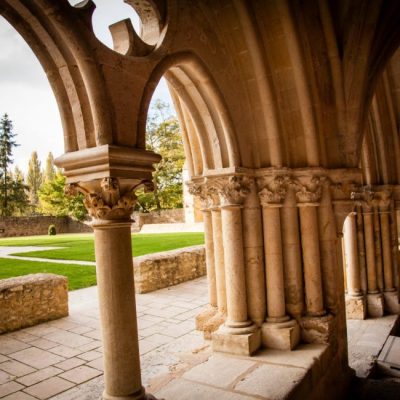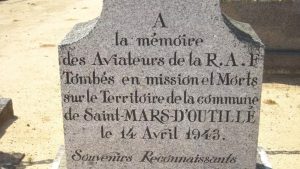During the Second World War, in 1943, Europe was largely occupied by Nazi Germany. The Allied air force played a crucial role in aerial reconquest, particularly through strategic bombing raids on industrial and military targets.
The United Kingdom became a real rear base for the Allied forces, particularly for the night bombing raids carried out by the Royal Air Force (RAF). At the same time, the US Air Force (USAAF) carried out daytime missions as part of a strategy of continuous harassment of enemy infrastructures.
On the night of 13-14 April 1943, more than 200 British Lancaster bombers took part in a raid targeting the port of La Spezia in Italy, a strategic site for the German navy. This type of operation, requiring a flight of more than 2,600 km round trip, was particularly risky because of the fatigue of the crews, the weather conditions and the enemy threat.
On the return leg of the mission, over occupied France, two bombers from 12 and 103 Squadrons of the RAF collided in mid-air. The collision, which occurred at around 1am, resulted in the two aircraft crashing into the town of Saint-Mars-d'Outillé. All 14 airmen on board perished in the crash. Four of them were Canadians, illustrating the Commonwealth's commitment alongside the United Kingdom in the war effort.
On the morning of 14 April 1943, the population discovered the wreckage of the planes. Despite the presence of the occupying forces and the restrictions imposed, the mayor of the commune, Armand Legeay, and the local councillors decided to pay tribute to the fallen airmen. This act of remembrance, carried out at the height of the war, testifies to the respect and gratitude of the local people towards those who lost their lives fighting to liberate Europe.
Today, the 14 airmen are buried in the West Le Mans cemetery, but the military plot in the Saint-Mars-d'Outillé cemetery remains an essential place of remembrance, marked by the commemorative inscription. It symbolises both local history and the link between this small commune in the Sarthe region and the major events of the Second World War.
The military plot is a demarcated area within the local cemetery, set aside to honour the memory of fallen airmen. It is distinguished by a stele bearing the inscription dedicated to the 14 crew members. The sober and solemn setting is maintained as part of the duty of remembrance.
Prices
Gratuit






















